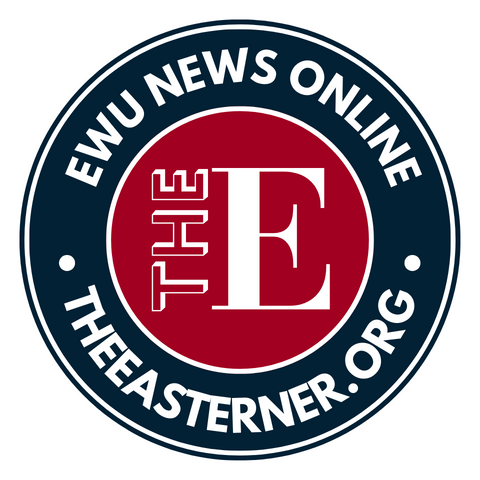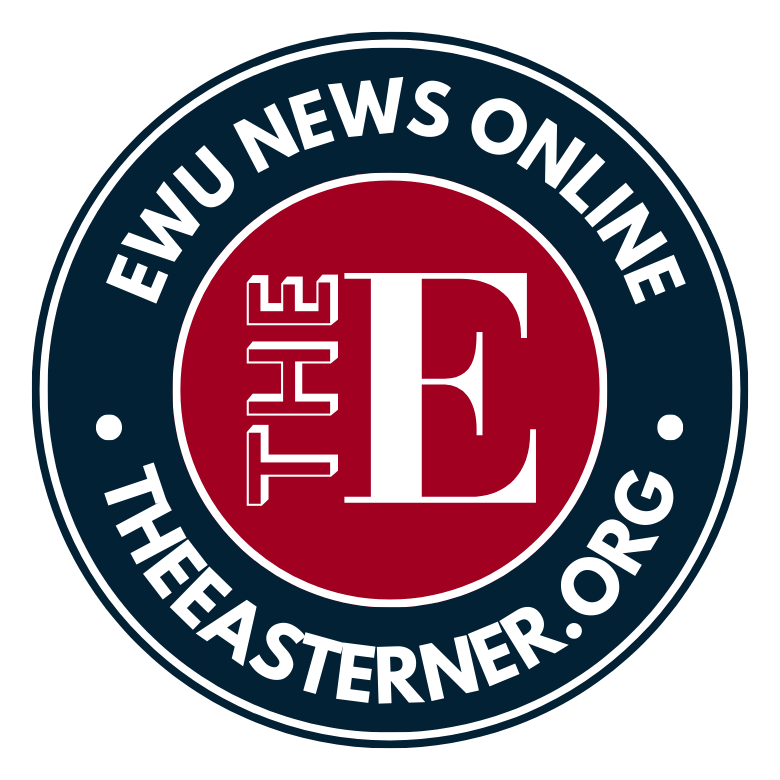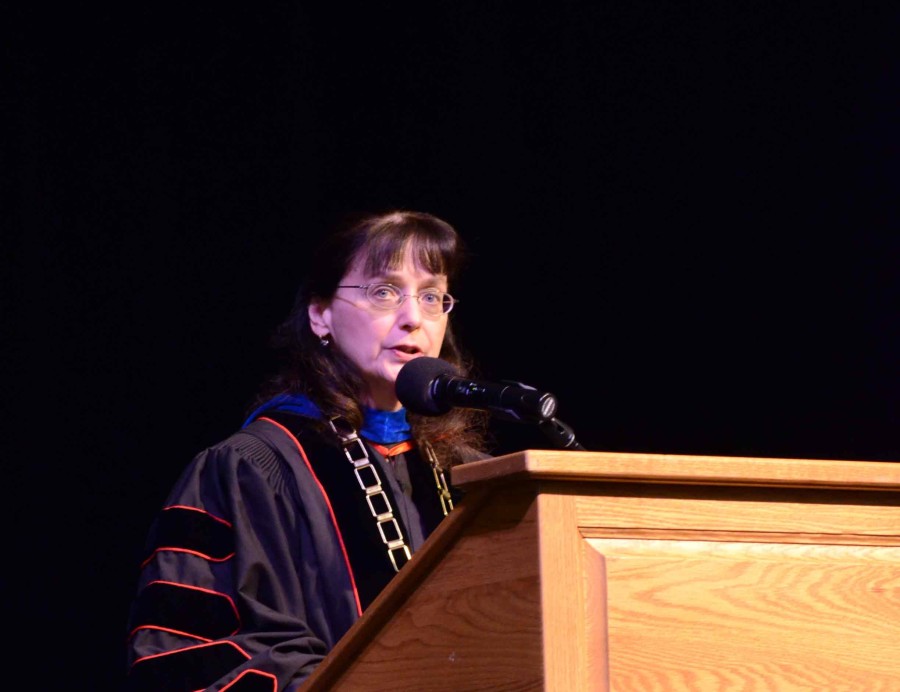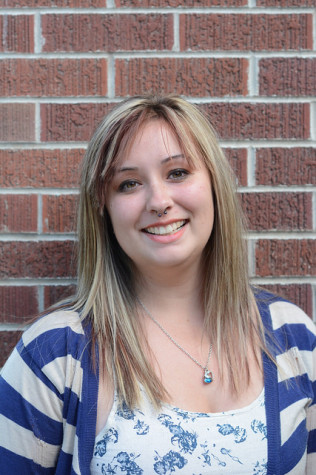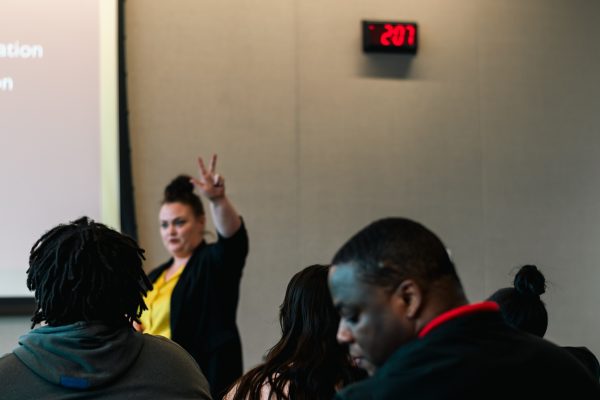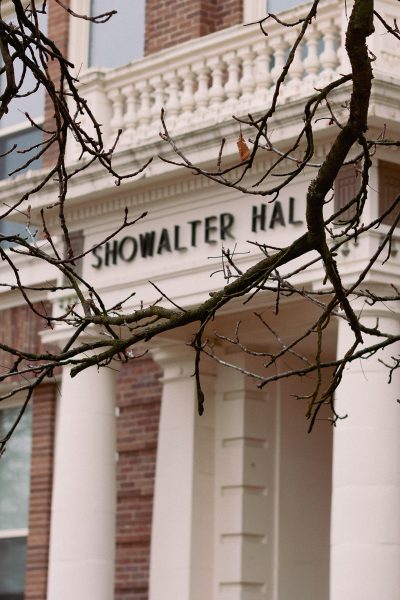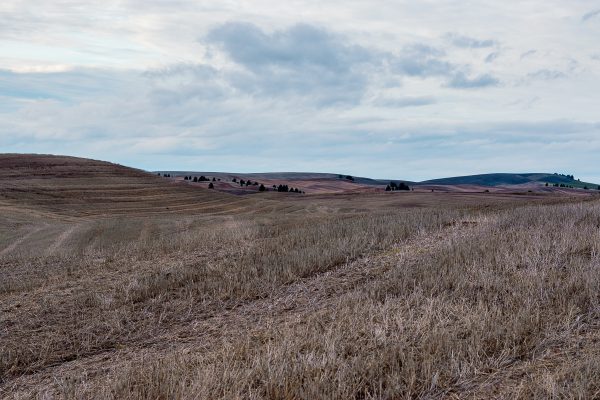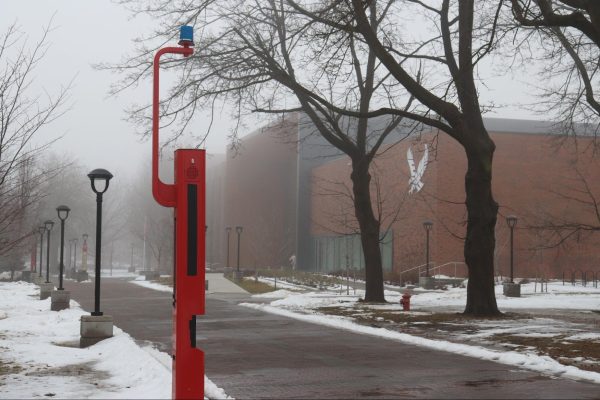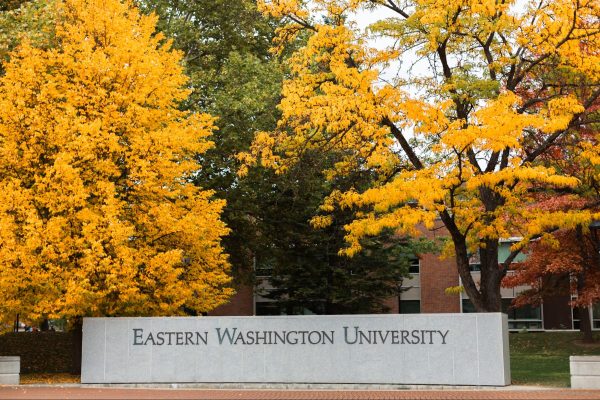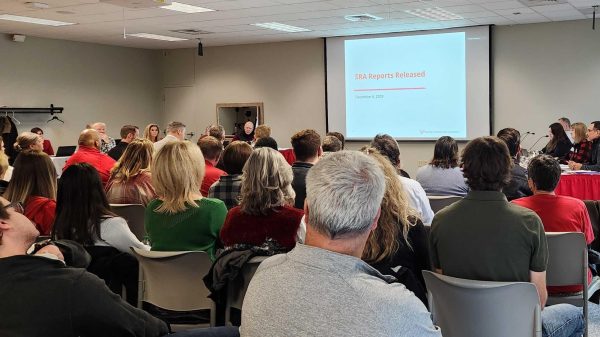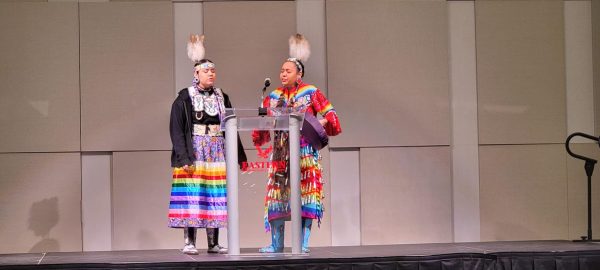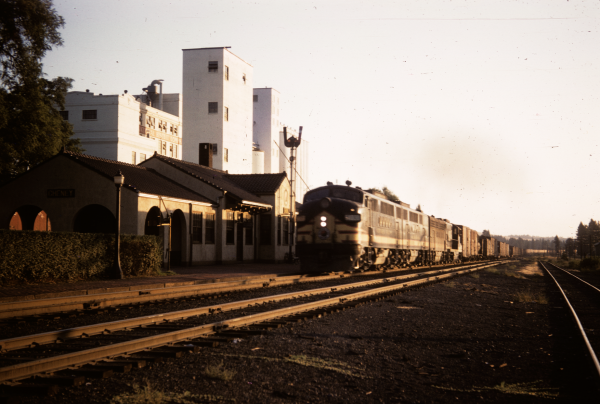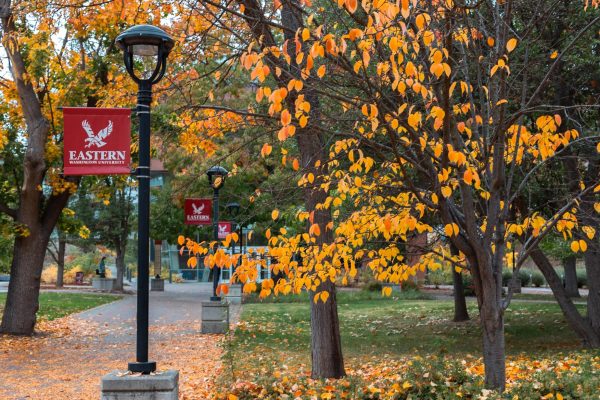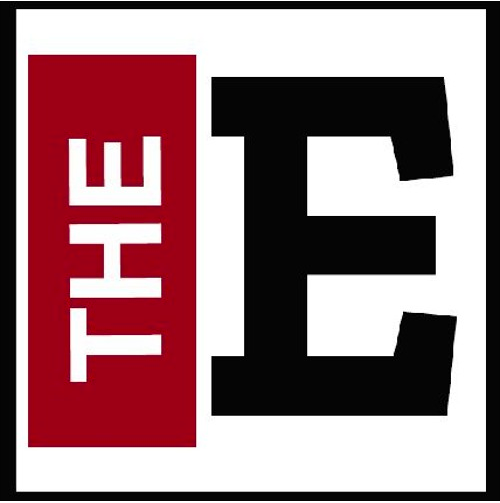Inauguration of Dr. Cullinan resonates ‘awesome’
Cullinan’s new fundraising campaign for EWU scholarships recognized
Dr. Mary Cullinan speaks at the investiture in Showalter Auditorium on May 1.
May 6, 2015
EWU officially installed Mary Cullinan, Ph.D., as the new university president on May 1 during her Investiture Ceremony.
A grand echo of Felix Mendelssohn’s Octet Es dur, op. 20 filled Eastern’s Showalter Hall as visitors drifted into the rotunda, chatting, laughing and taking pictures of the EWU Octet.
At the same time, a parade of professors dressed in academic regalia marched through the center of campus.
At 11:42 a.m., with Cullinan’s official installation as new university president, was precisely the moment where the 3-inch, gold-plated medallion was placed around her neck.
Considering Cullinan was on campus since August 2014, the hour-long ceremony was shorter than what most investitures are, according to LeAnn Case, who was part of the investiture committee.
An investiture, said Cullinan, is a celebration of history and past successes as well as looking into the future.
Cullinan announced “Inspire Awesome,” a new fundraising campaign to fund scholarships in the future for EWU students.
She challenged staff and faculty to donate money to the fund saying, “For every dollar donated, we [herself and her husband, Jeffery Kelter] will match that donation up to $50,000.”
Cullinan also marked progress on what she told The Easterner back in June 2014 during her unofficial, summer welcome speech. She originally said she wanted to pool together public and private monies to improve EWU. At the investiture, she said she was well underway working with business partners in the Cheney and Spokane communities to bring in fundraising dollars for the football stadium “Gateway Project,” and for a new “living building” on campus.
The living building would be a way to bring in renewable energy to campus with a building that could sustain itself.
George Pernsteiner, president of the State Higher Education Executive Officers Association, continued with the theme of looking into the past and looking to the future.
Pernsteiner asked, “If you’re already just as perfect as can be, what can Cullinan bring to you?”
His answer: reinforcement.
Pernsteiner established that the decisions Cullinan had to make at Southern Oregon University involving entrenchment plans and cuts to faculty and staff allowed her to engage the community in conversation. Community engagement is something that she would bring to EWU as well.
Visitors to the investiture travelled from across Washington and Idaho, with representatives from Central and Western Washington Universities, Whitworth and Gonzaga Universities, Lewis-Clark State College and the Community Colleges of Spokane. There were even representatives from Southeast Missouri State and East Tennessee State University.
Inclusion of the students and community, as Cullinan said during her speech, was visible at all times during the investiture. ASEWU President Dahir “D.J.” Digre presented a small speech with faculty members, and multiple student dancers from Sapna Basy to the Hui ‘O Hawai’I Club performed cultural dances. EWU students performed all the music with the Brass Ensamble, the Jazz Trio, EWU’s Octet, and the entire congregation sang Eastern’s Alma Mater with the EWU Symphonic Choir.
Many of the traditions of investiture hark back to medieval times. The professors who represented all the colleges and programs on campus with their robes and caps “are patterned after the gowns and hoods worn regularly in the middle ages by scholars for warmth,” according to the investiture program.
The academic procession also bears another Middle Ages icon: the mace. This object makes appearances at commencement and other formal ceremonies. Instead of the familiar battle weapon adorned with a spiked sphere, the EWU mace is a silver-topped rosewood shaft that deviates from traditional design. The program said the curves in the mace capture the landscape of Eastern Washington.
